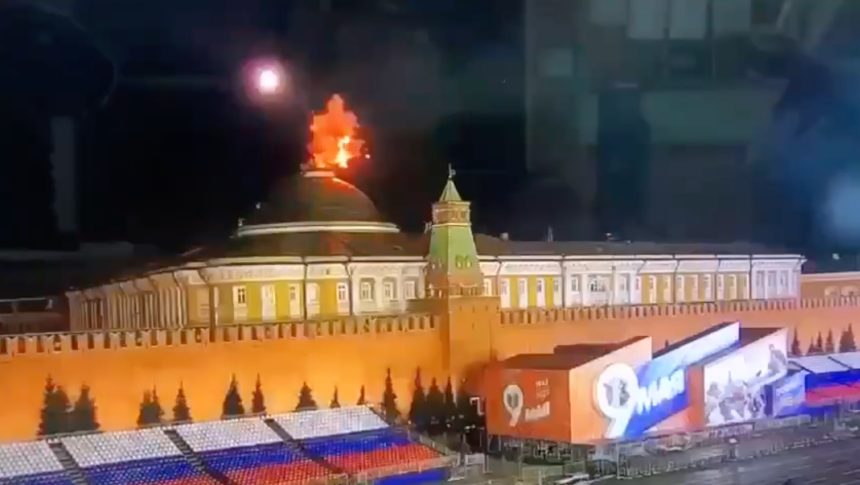According to Russia, Kyiv on Wednesday night launched a drone attack on the Kremlin to kill President Vladimir Putin.
A night attack with two drones against Vladimir Putin’s residence in the Kremlin was foiled last night. According to Moscow it was a “Ukrainian terrorist attack on the life of the Russian president, who remained unharmed”. The official statement says that the two unmanned aircraft were destroyed by use of air defense systems, but some fragments would have fallen within the territory of the presidential complex, causing no injuries.
“Tonight, the Kyiv regime made an attempt to strike with unmanned aerial vehicles on the Kremlin residence of the President of the Russian Federation,” says the release. “Two unmanned aerial vehicles were aimed at the Kremlin. As a result of timely actions taken by the military and special services with the use of radar warfare systems, the vehicles were put out of action. As a result of their fall and the scattering of fragments on the territory of the Kremlin, there were no victims or material damage.”
“We regard these actions as a planned terrorist act and an attempt on the President, carried out on the eve of Victory Day, the May 9th Parade, at which the presence of foreign guests is also planned. As a result of this terrorist act, the President was not injured. The schedule of its work has not changed, it continues as usual.”
The statement ends with a threat of a retaliatory attack: “The Russian side reserves the right to take retaliatory measures where and when it sees fit.”
Some clips circulated on Telegram channels supposedly show the attack and white smoke rising from beyond the Kremlin walls after the impact.
At the moment Kyiv has not taken responsibility for the attack, however, if confirmed (someone said it could be a “false flag”), the attempted air strike once again proves that drones (of both sides) have become some of the most (if not the most) important assets in the war in Ukraine: they are used to carry out reconnaissance and coordinate air strikes and they can also carry out long range attack missions. The smaller Kamizake drones are very difficult to counter also because they are difficult to identify on radars and for this reason they pose a significant threat to air defense systems, especially when used in swarms (large numbers).
Ukraine has made extensive use of several smaller armed UCAVs (Unmanned Combat Aerial Vehicles), with the Bayraktar TB2 medium altitude long endurance (MALE) unmanned combat aerial vehicle (UCAV) of the Ukrainian forces emerging as the real star of the air war, inflicting Russian forces heavy losses, some of those caught on tape and circulated online.
Earlier this year, Ukroboronprom, Ukraine’s main defense company, said it had completed several stages of testing a long-range drone, with a range of more than 1,000 kilometers and a payload of up to 75 kilograms. Still, Ukraine proved to be already able to launch long-range attacks in 2022, as proved by the attacks on Engels air base, located about 600 km northeast of the Ukrainian border. Those attacks are believed to have been carried out by modified Tupolev Tu-141 Strizh drones.
As explained in a previous story, the Tu-141, is a Soviet reconnaissance drone that historically served with the Soviet Red Army during the late 1970s and 1980s, before being retired in the early 1990s. In 2014, Ukraine “resurrected” the drone after the invasion of Crimea, since large stocks of it remained in its territory following the fall of the Soviet Union.
According to AviationWeek, Tu-141 has a range of 1,000 km along a preprogrammed route, with several turning points and altitude changes, overcoming air defenses at low altitude, from 50 m (165 ft.), at a speed of 1,100 kph (685 mph). “To convert the reconnaissance UAS into a cruise missile, the Ukrainians would have had to replace the guidance system. The missile is likely guided by inertial navigation, perhaps with updates via satellite navigation. This is the simplest variant. They likely also installed a warhead in place of reconnaissance equipment. The Tu-141 weighs 5,370 kg (12,000 lb.), which makes it possible to estimate the weight of the combat load as 500-1,000 kg.”









